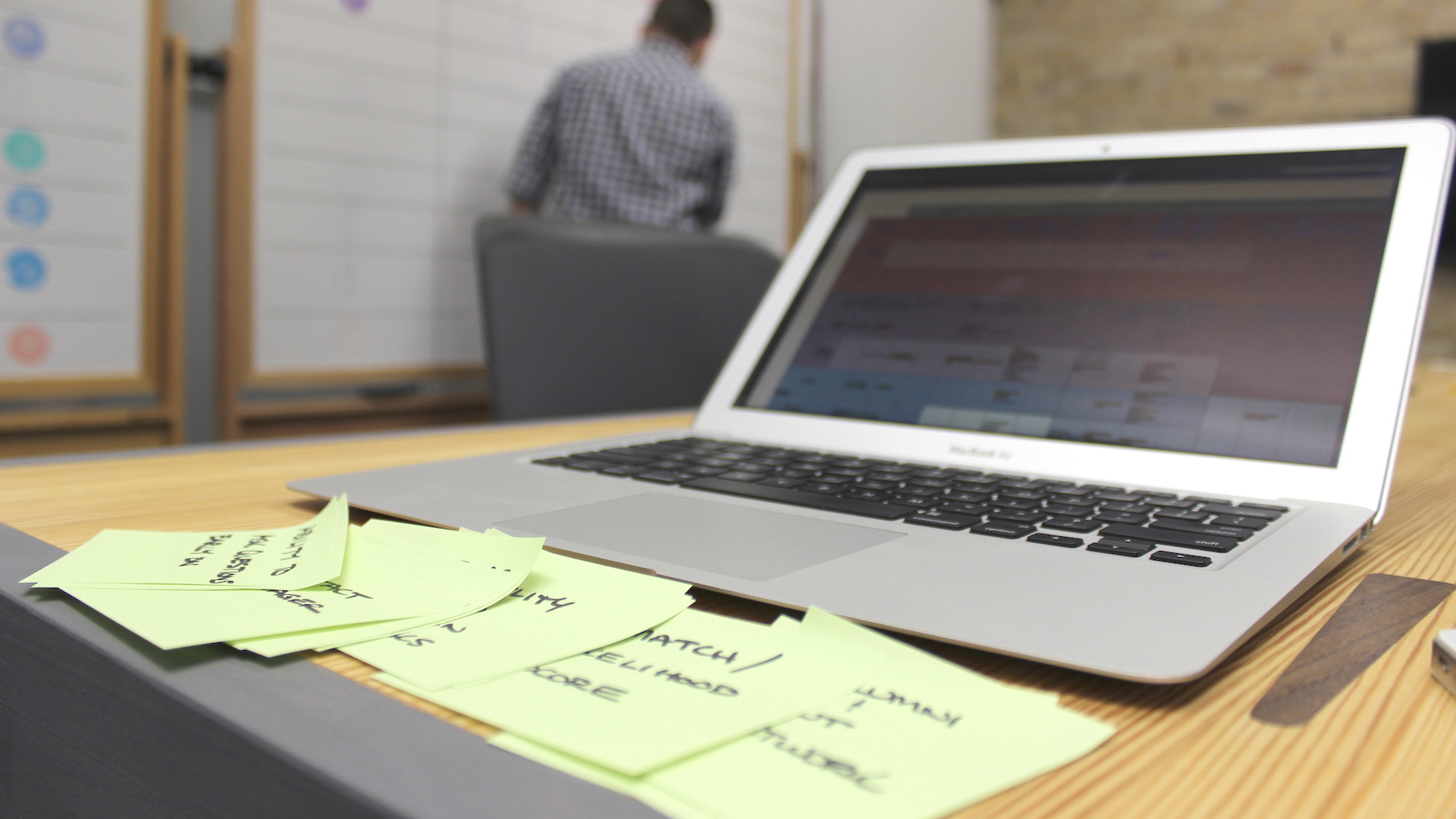
As UX designers, the work we do centers on ensuring that our designs are easy to use and provide a great user experience. While these two points are closely related, they’re not quite the same thing. Usability is a measure of how easy a product is to use, but it’s just one aspect of the user experience, a broad term that measures a product’s usability, functionality, findability, trust, value, and delight.
While usability is extremely important in our work, successful UX design also means paying attention to other aspects of the user experience. In this post, we will discuss what the terms user experience and usability mean and how they differ. We’ll also illuminate why both are important in providing value to the users of a product.
What is Usability?
In simple terms, usability refers to how easy an interface is to use. At Fuzzy Math, an early step in each of our client projects is conducting a UX review of the existing product we are trying to improve. One part of that evaluation is determining how usable the product is. This is done (in part) through a research method known as usability testing.
In a usability test, users are provided with a set of tasks to complete using the interface. Researchers observe the process and take note of what works well, and any points at which users might struggle to complete the tasks. While more informal usability testing is mainly qualitative, researchers carrying out formal testing record metrics like time to completion and completion rate.
But what exactly makes something easy to use? Here are some questions we ask ourselves based on the key components of usability:
- Learnability: How easy is it for users to learn how to use the interface the first time they interact with it? Can it be grasped quickly? Does it behave consistently enough to be predictable?
- Memorability: How easy is it for users to return to the interface and quickly remember how to use it? Is it easy to recount how it works?
- Efficiency: Once a user has learned how to use the interface and become an experienced user, how quickly can they perform the tasks they need to accomplish? Is the path to task completion obvious and free of distraction?
- Error Frequency: When using the interface, how many errors are users making? Are the errors severely impacting workflow? Are error messages clear? Can a user recover from the error quickly?
- Satisfaction: Does the user like using the interface? Would a user want to use the interface again? Would they recommend the interface to another user?
Usability Goals
Many product teams define and set usability goals for their products. Usability goals are the minimum measure of the learnability, memorability, efficiency, error frequency, and satisfaction of a tool that must be reached before a product or feature can be launched. By defining and continually measuring usability metrics over time, teams can measure the change in usability as the product grows. Usability goals can also be an important design metric or KPI used to align design, product, and business teams on the overall success of a product.

Why is Usability Important?
When an interface is usable, everyone benefits. On the end user side, people have a better experience interacting with the product when they can learn it quickly, and when it provides a continuously easy and pleasant experience. Another key factor in a product’s usability is whether the interface accommodates all users, including those with diverse abilities such as visual or physical impairments, older users with different abilities due to aging, and users with “situational” impairments like limited internet access or glare from direct sunlight.
On the business side, companies save more money when employees using interfaces are more productive. Whether your users are novices or experts, a well-designed and usable interface can also drive sales and boost customer numbers. In short, better usability helps improve the overall user experience—which is what user-centered design is all about.
What is User Experience?
User experience includes all aspects of the end user’s interaction with a product or service. Usability is an important aspect of the overall user experience, but it is not the only one. If only usability is considered, many other aspects of the experience are overlooked and user’s needs can’t be fully met.
Unlike usability, user experience goes beyond the user interface. There are other critical aspects of the product or service that need to be explored in order to get a full picture of the product or service. These aspects include:
- Functionality: Does the product or service meet the end user’s needs? Can a user use it to do what they need to do? Are the tasks and information a user would want made available?
- Findability: Are users able to find what they’re looking for? Can users find the product itself using external search engines? Are navigational elements clear and informative?
- Trust: Does the product, service, and/or company seem credible? Is it easy to contact a real person or find support information? Does the content seem genuine and up to date?
- Value: Is the product or service desirable to the end user? Can a user easily describe its value? Does it improve customer satisfaction?
- Accessibility: Can it be accessed via all channels and devices? Are all potential end users, including those with disabilities, being considered?
- Delight: Are users’ expectations not only met, but exceeded? Are there differentiators from other similar experiences, or is anything being provided that is pleasantly unexpected? Does it bring a user joy?
Asking these questions about a product or service is part of our initial UX review and digital product strategy services. During this process, we go beyond simply testing the usability of the design to understand the entire user experience. It’s not only about asking users if they can efficiently complete a task; we want to know whether our design would add value to their lives, provide the functionality they need, and constitute a more delightful experience than what they’re used to.

Why is User Experience Important?
As you can see, focusing only on certain aspects will only get you so far in designing for great user experiences. After all, an easy-to-use product isn’t as valuable if it isn’t accurately reflecting users’ needs. Designing a great user experience—including a usable interface—will ensure that you are making products that work, and that keep users happy. Happy users will return to an interface again, and are more likely to tell other people about it too.
When Usability and User Experience Don’t Align
It should be noted, however, that a product or website that checks all of the usability boxes isn’t guaranteed to provide a good user experience. The opposite is also true—a design that tests poorly for usability may not be poorly designed. This is because designers often have to take business goals and design principles into account. Depending on what those goals are, the end design might veer slightly away from usability best practice in order to facilitate a different aspect of the experience, such as value or trust.
Take the QWERTY keyboard, for example. Whether you buy the theory that the layout of the keyboard was developed to keep the keys from jamming or the more cynical theory that it was to force users to pay for typing lessons, the end result was purposefully disregarding usability in order to achieve a particular experience.
Marketing sites are also a good example of usability not being the primary goal of the project. Instead, the goal of a marketing site is to help the user learn that the product exists and to generate interest in the product. Since usability is a secondary goal, designers and marketing creatives have the opportunity to push boundaries to create a more interesting and innovative experience. However, once the user has decided to purchase that product, the checkout process should be familiar and, above all, usable.
Essentially, there is a time and a place for prioritizing usability over the entire experience. Balancing your user’s expectations of usability with other business or design goals isn’t an exact science (in fact, you might say it’s a fuzzy math). But good designs balance the two and craft an experience that goes beyond usability to bring delight innovation to the end user.
Interested in learning more about how Fuzzy Math’s UX design services can transform your product by crafting an experience that is both useful and delightful? Reach out for a consultation or evaluation.